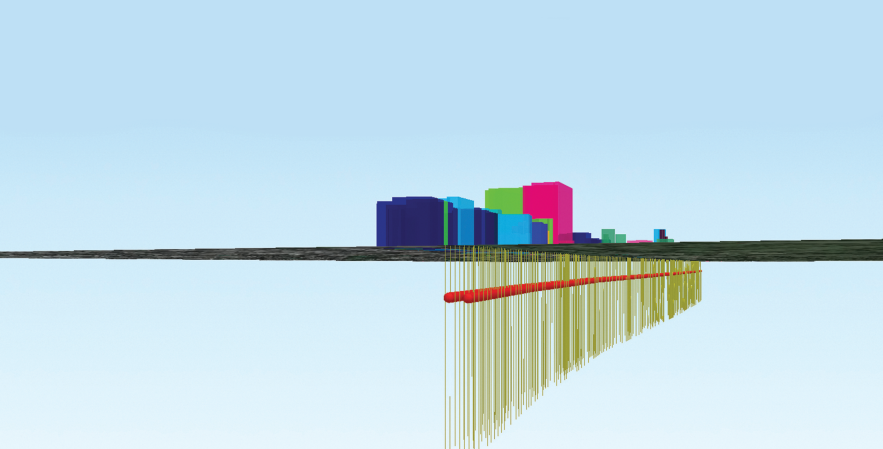
What is it?
Old and deep Underground train lines suffer from overheating problems, particularly during summer, which is detrimental for passenger comfort and health. Geothermal systems offer a potential energy efficient cooling solution compared to energy intensive conventional cooling. The waste heat of the subway tunnel can be harnessed, to provide heating to residential and commercial blocks above the tunnels.
A 1D model of a representative line in the London Underground is coupled with a 3D model of the boreholes to transiently simulate the cooling effect of the geothermal boreholes on the subway system’s environment.
How does it work?
Geothermal boreholes extract or inject heat into the ground by using refrigerated fluids that provide district heating or cooling for domestic and commercial uses. CSIC proposes the use of boreholes to tackle overheating problems encountered in the old, deep tunnels in the London Underground. Boreholes are drilled close to the tunnels, particularly tunnels constructed under the roads, due to the availability of space and ease of construction.
A new concept of boreholes utilises pipe insulation to enable a single borehole to extract and inject heat at the same time, enabling cooling and heating to buildings simultaneously. The borehole will extract heat from the soil next to the tunnels resulting in cooling the Underground’s tunnels and platforms, while the boreholes satisfy a portion of the surrounding buildings’ heating and cooling demand.
Impact and value
Geothermal boreholes offer an efficient approach to cooling tunnels and platforms:
- Simulations have shown that retrofitting the Central Line with boreholes will result in decreasing the air temperatures in the tunnels and platforms by 5Co and 4.5Co respectively during summer
- A single 100m borehole in the Central Line can provide an equivalent of 1.25 UK household annual heat demand and an addition of 3250KWh of cooling.
- Harnesses the passenger thermal comfort in the London Underground and alleviates overheating problems in the summer.
- Utilises London Underground’s wasted heat to provide district heating and cooling for buildings above the tunnels.
CSC team: Adnan Mortada, Dr Ruchi Choudhary, Professor Kenichi Soga
Download the full case study here
